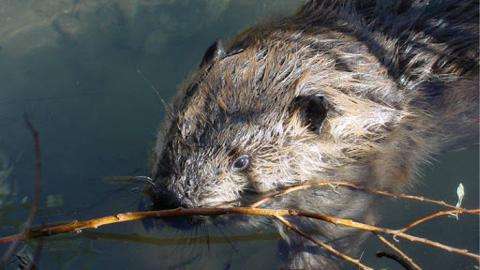NWRC Research Areas: Forest and Wetland Resources

Our scientists are improving methods to manage healthy forests, wetlands, and rangelands.
Forests are integral components of the global climate, yet the material products that trees provide are essential to sustain human quality of life (e.g., paper, fuel, lumber, poles, fruit, etc.). While production forestry occurs throughout North America, Oregon and Washington are the United States largest leading producers of forest products. Several existing NWRC research projects stationed at our headquarters in Fort Collins, Colorado, have expertise on species and issues related to forest and riparian resources and are available to assist with research studies in the Pacific Northwest or any state in the United States. Expertise includes but is not limited to economics, genetics, chemistry, ungulates, rodents, predators, and repellents.
For most tree species, the first five years after planting is the most vulnerable period in which trees are exposed to damage by most wildlife (e.g., deer, elk, voles, gophers, rabbits/hares, American beavers, mountain beavers). However, wildlife damage also occurs after stand development, such as when trees are peeled by black bears and porcupines.
Damage can result in the following:
- Reduced productivity
- Delayed harvest cycles
- Failure to replace trees after a harvest or a fire
- Failure to establish native plants to increase forest diversity, improve riparian areas, revegetate disturbed sites, restore endangered or threatened plants, or create or improve wildlife habitat.
Additionally, North American beavers damage trees by direct take (e.g., gnawing, cutting, clipping) of all sizes classes (seedling, sapling, pole, mature) and by flooding forest stands through dam building. In addition to timber damage, beaver damming activity also causes damage to agricultural crops and transportation networks. Damage that floods and/or weakens roads, highways, and railways, also leads to risk in human health and safety.
Managing resources to resolve these problems is becoming increasingly difficult. The land base to produce timber is shrinking. This declining base restricts options, while increasing the necessity to protect remaining resources. Historical approaches to reducing forest damage problems are under increasing scrutiny as the public demands more humane means to resolve wildlife conflicts. Additionally, conflicting management objectives frequently impede attempts to resolve problems. One manager may be attempting to reduce damage on a timber stand, while concurrently an adjacent landowner is working to increase wildlife populations. The combined result is the critical need for increased and enhanced research and outreach programs. New nonlethal approaches need to be identified and existing approaches improved. Additional research is necessary to identify and quantify the true economic impacts of wildlife on intensively managed tree plantations. Improved cost-benefit analyses will provide forest managers with knowledge to refine forest management strategies.
Related Links
Forest and Wetland Resources Protection (Publications)
Contact Us
Forest and Wetland Resources
Jimmy Taylor, Project Leader
Email: jimmy.d.taylor@usda.gov
Phone: 970-266-6128
4101 LaPorte Avenue
Fort Collins, CO 80521

